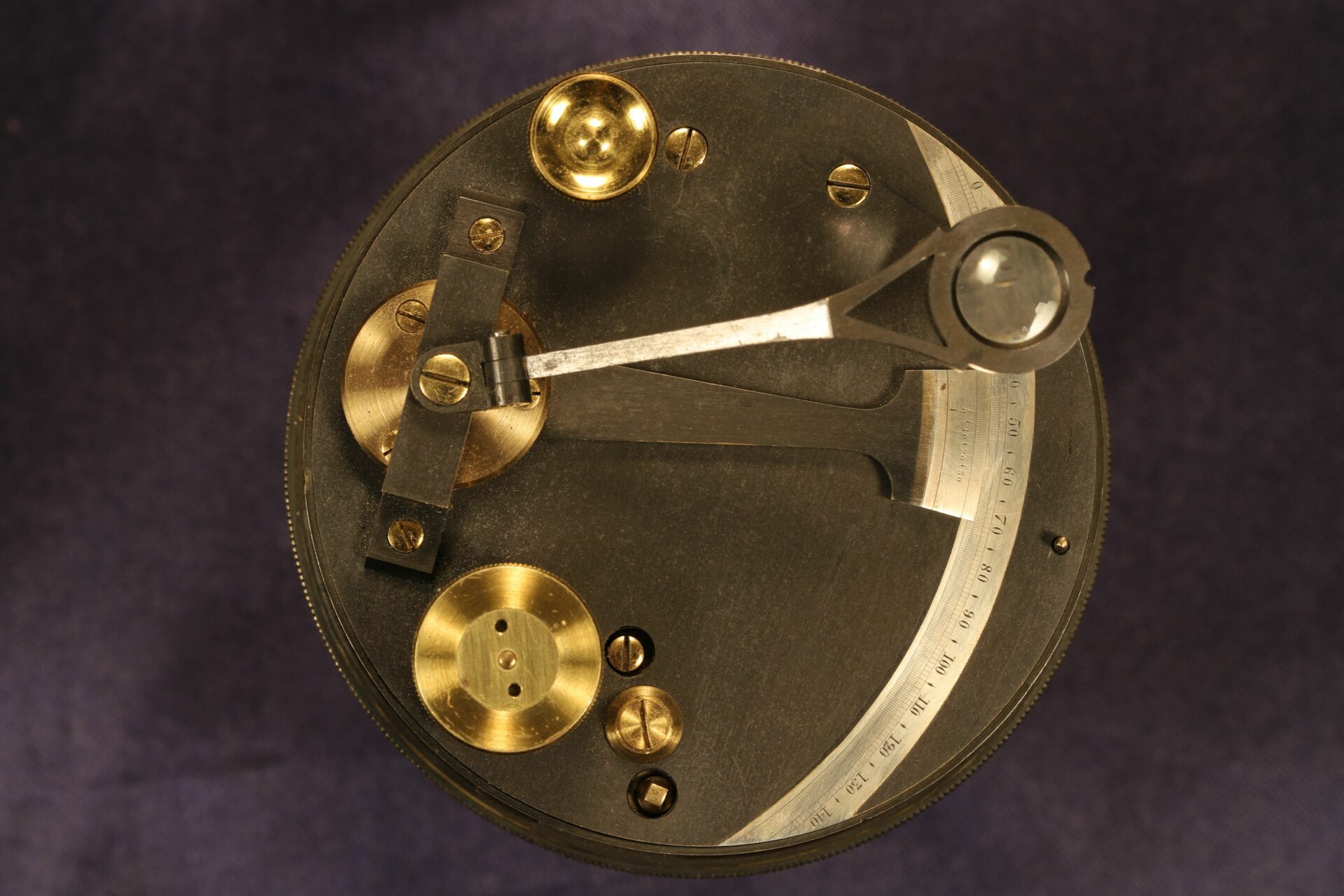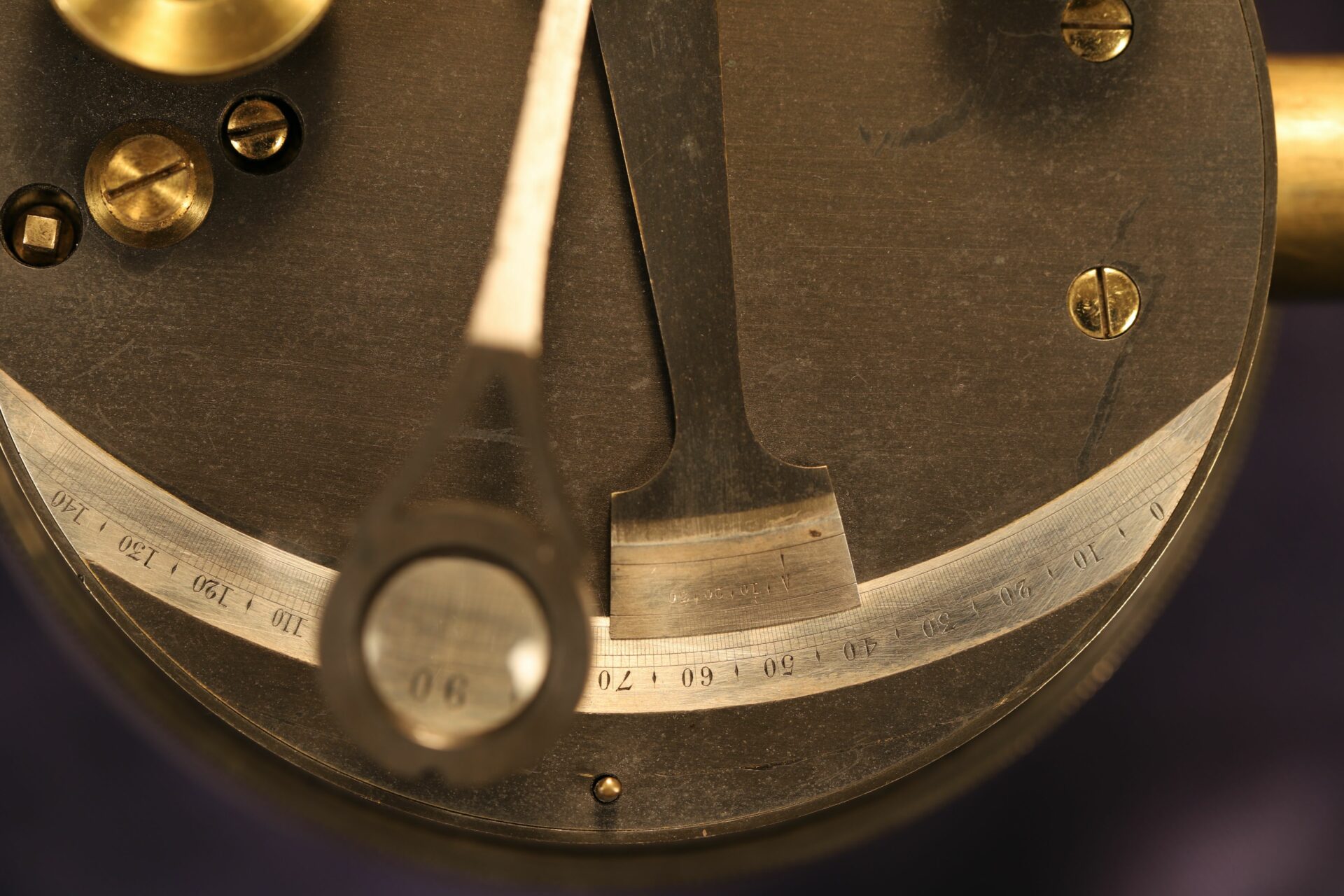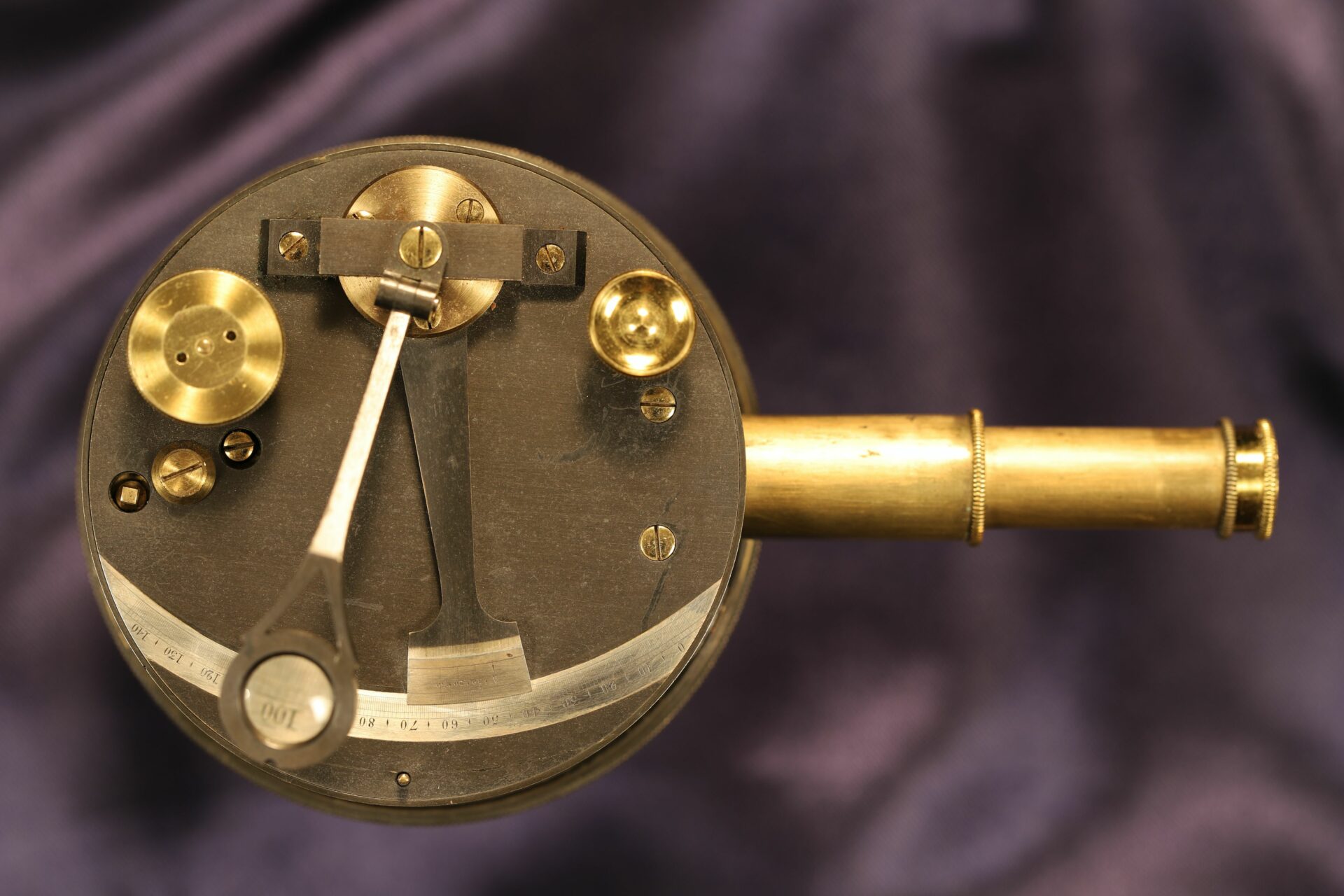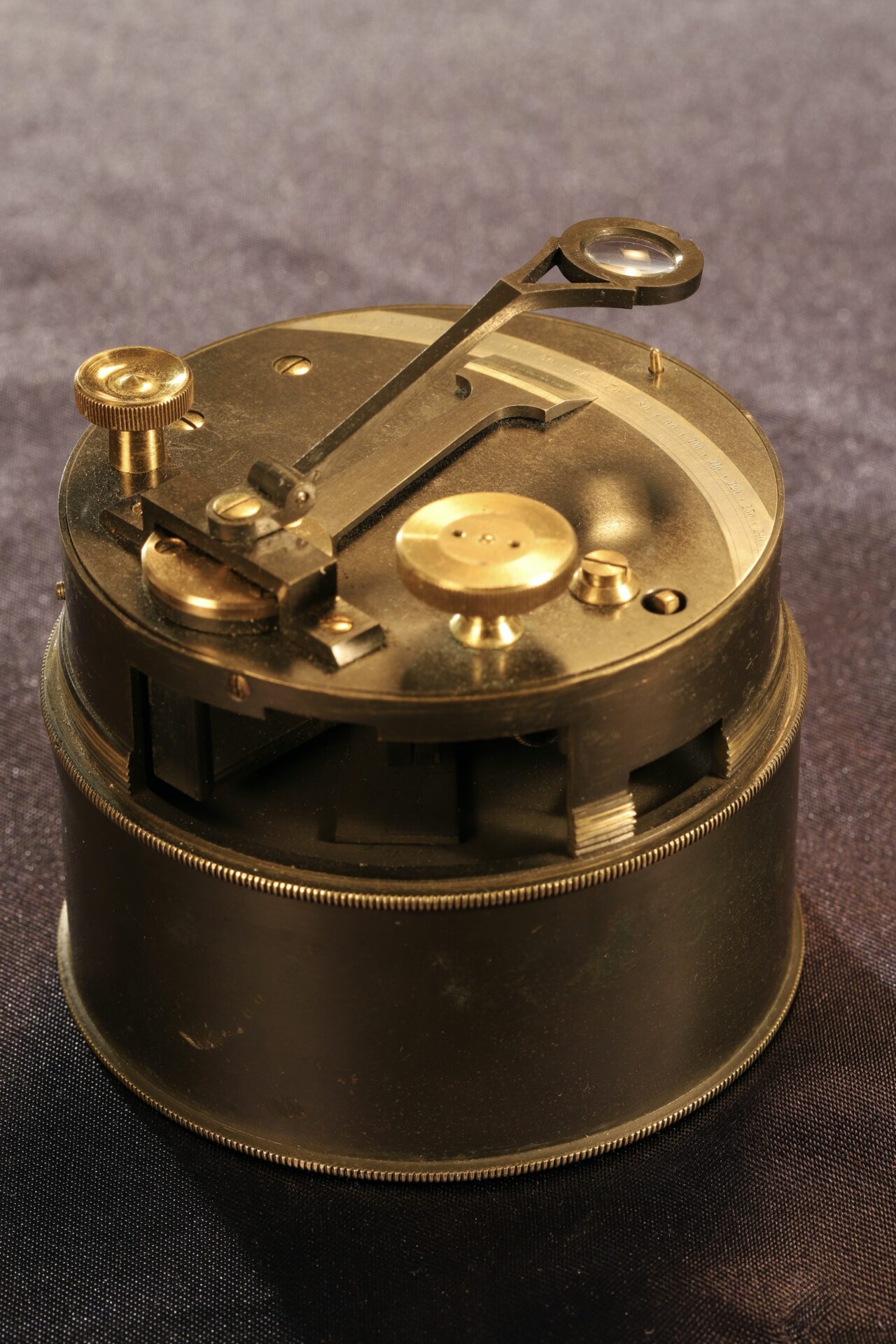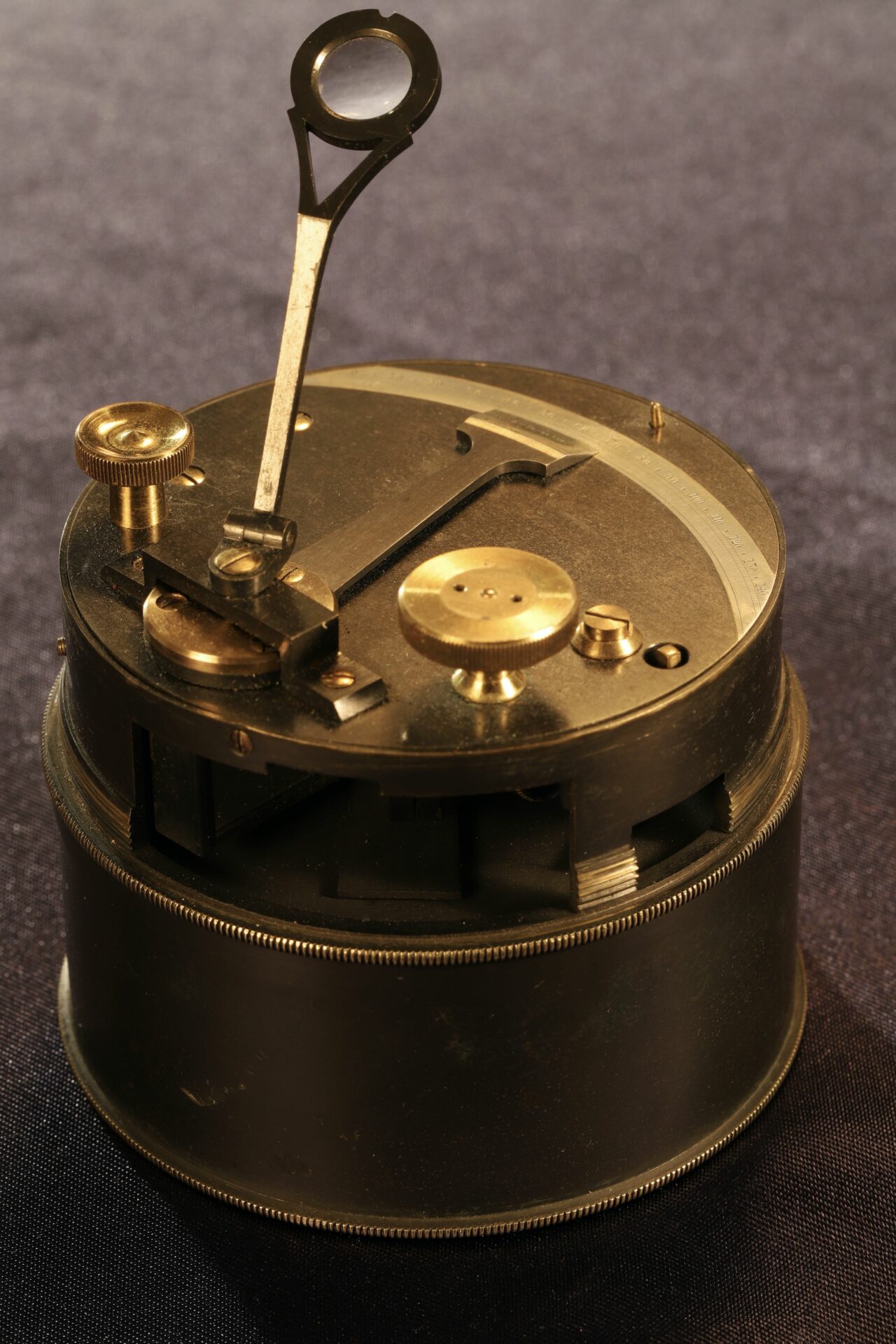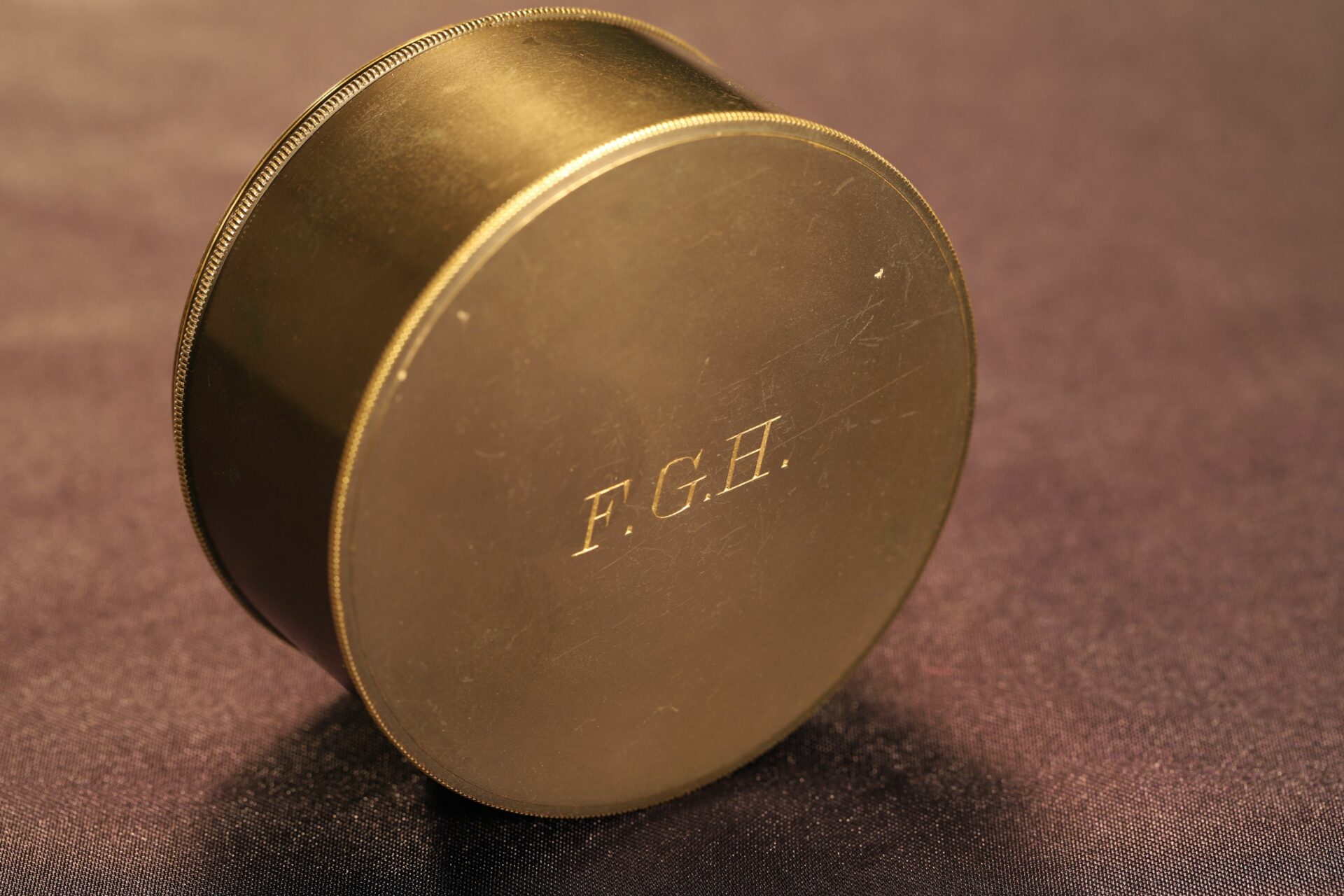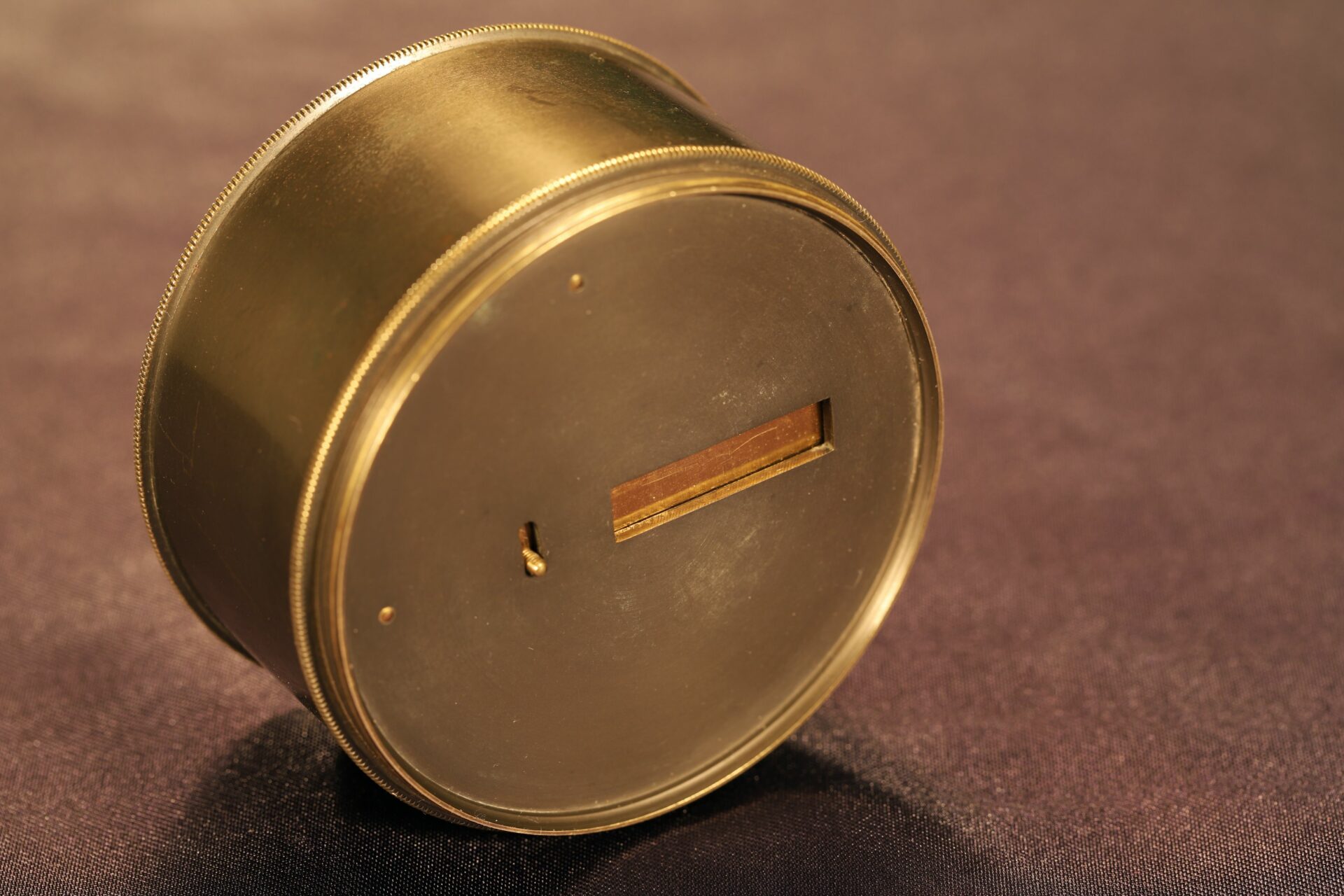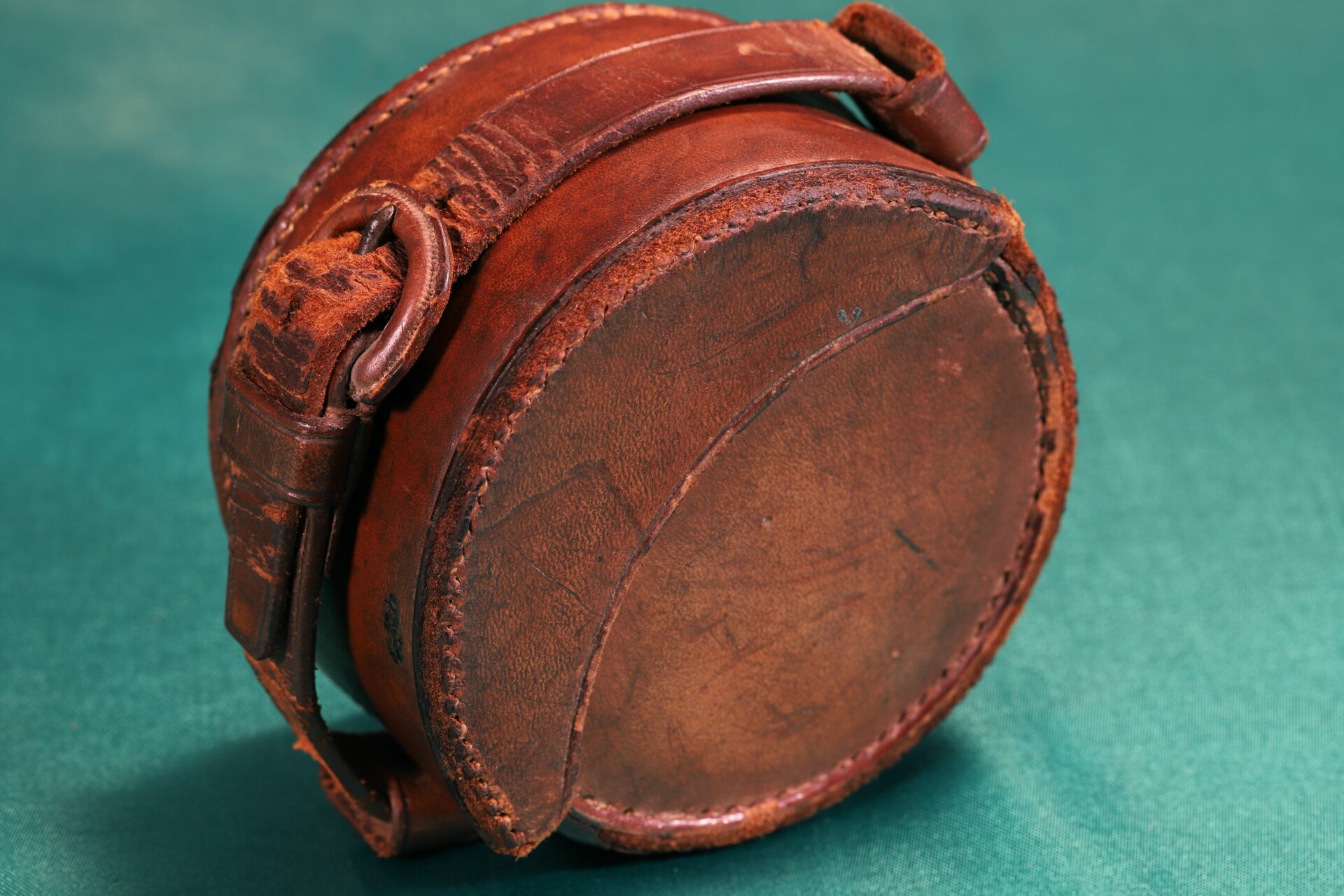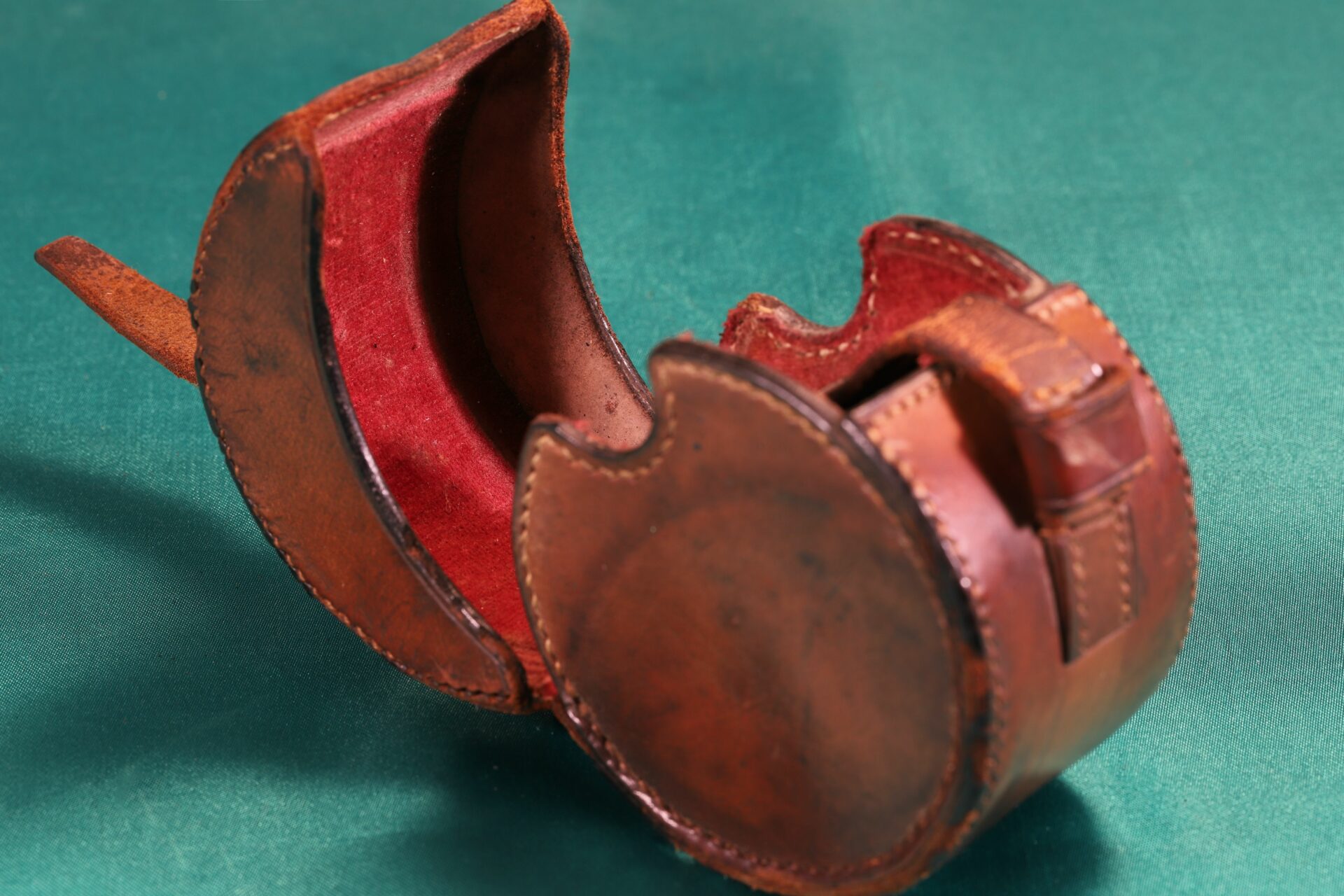Victorian Box Sextant or Pocket Sextant c1890 – SOLD
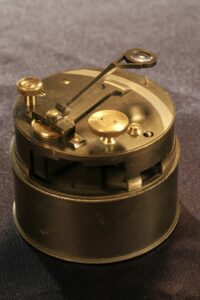 Finely constructed atop and between twin plates, the sextant with silver arc marked in degrees from 0 – 140, vernier marked in degrees from 0 – 30 with geared rack and pinion drive, mirror key and loop. Twin ports with mirror adjustment squares, arranged about the circumference: mirror adjustment port with square, selectable viewing aperture with sliding pin hole shutter; viewing exit port revealing smooth bore telescope mounting, open section for light collection. Twin integral red and green shades, with shade shutter to verso. The body with twin circumferential threads accepting the substantial cover. Two-draw corrected telescope with attached eye piece. Neutral density filter for sun shots. The telescope in its collapsed state remains fitted within the instrument – it is withdrawn if required, though the box sextant can be used without it. The lid inscribed “F.G.H.,” and all contained within its correct maroon velvet lined leather military pattern carry case.
Finely constructed atop and between twin plates, the sextant with silver arc marked in degrees from 0 – 140, vernier marked in degrees from 0 – 30 with geared rack and pinion drive, mirror key and loop. Twin ports with mirror adjustment squares, arranged about the circumference: mirror adjustment port with square, selectable viewing aperture with sliding pin hole shutter; viewing exit port revealing smooth bore telescope mounting, open section for light collection. Twin integral red and green shades, with shade shutter to verso. The body with twin circumferential threads accepting the substantial cover. Two-draw corrected telescope with attached eye piece. Neutral density filter for sun shots. The telescope in its collapsed state remains fitted within the instrument – it is withdrawn if required, though the box sextant can be used without it. The lid inscribed “F.G.H.,” and all contained within its correct maroon velvet lined leather military pattern carry case.
A really very good genuine example of a box sextant or pocket sextant that would be hard to fault. This piece has better than average telescope of two-draw pattern and with image correction. Retaining a very high proportion of original finish. The lid with minor distortion and a little difficult to screw home.
The telescope, mirrors, shades and loupe all in excellent condition. The leather case with general wear, the closure strap perished.
A box (or pocket) sextant works on the same principle as a traditional sextant, but here the mechanism is enclosed in a brass box of about 3 inches diameter. William Jones, a leading instrument maker in London, introduced the form in 1797. The German explorer, Alexander von Humboldt, had an early example that he described as being “very useful for travelers when forced in a boat to lay down the sinuosities of a river, or take angles on horseback without dismounting.” By the mid-nineteenth century, box sextants were said to be particularly useful for military reconnaissance. They were still available in the early twentieth century.
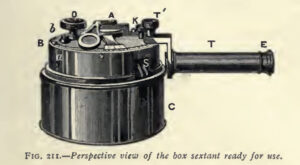 Although unsigned, this example is almost certainly the work of William Ford Stanley – the image is of a Stanley box sextant dating to c1890.
Although unsigned, this example is almost certainly the work of William Ford Stanley – the image is of a Stanley box sextant dating to c1890.
In all, a very crisp original and really quite scarce example of this most interesting instrument.
Dimensions of travel case: 3½” diameter x 2¼” high
Stock No: SX1273
Price: SOLD
